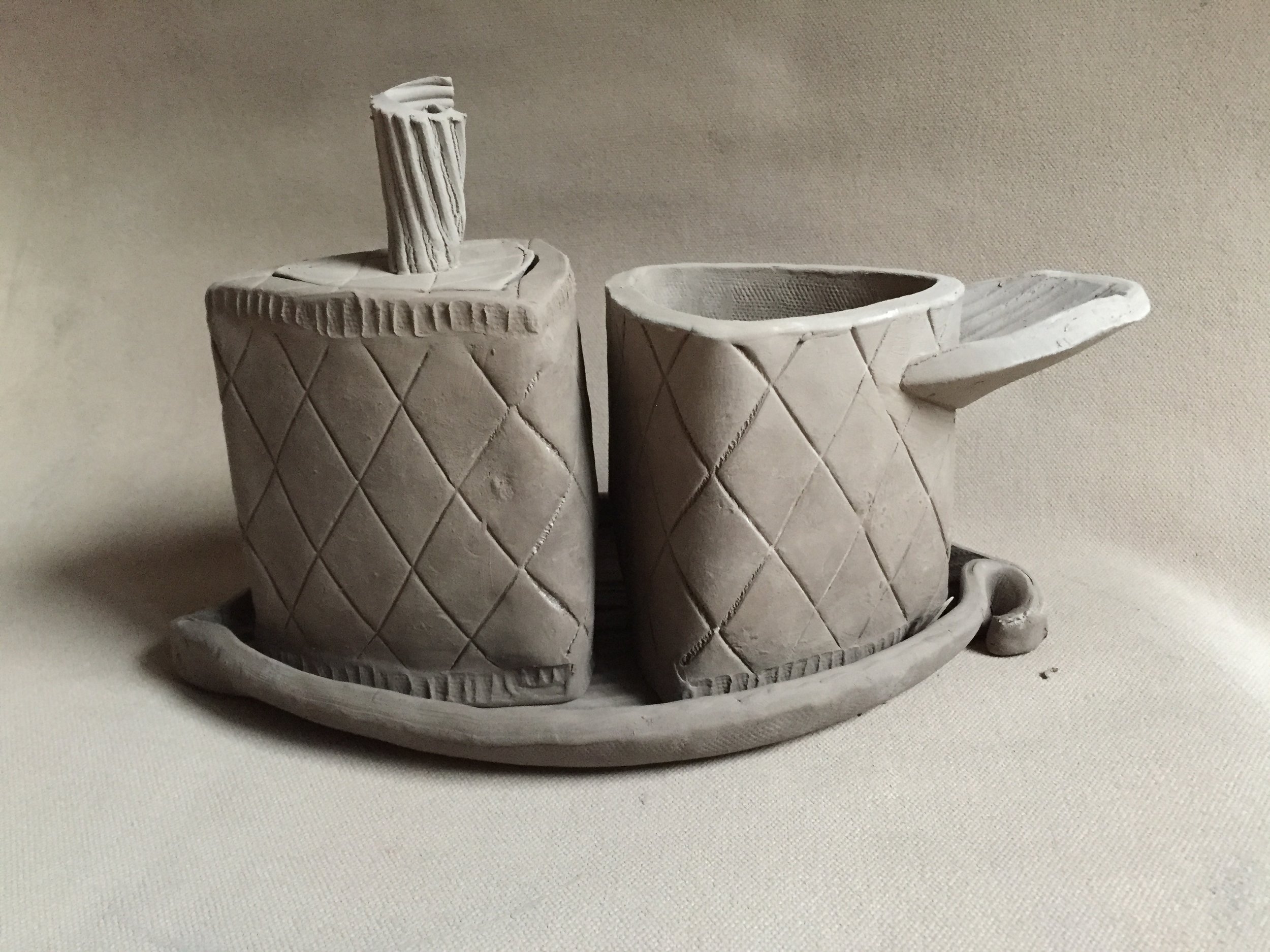Recently I’ve been working on projects big and small. It has me thinking about how this affects the pricing of a finished piece I create. Although the amount of clay that goes into each one is a material factor and obviously proportional to their finished size, creative time and artistic effort are important to the end price calculation too. Here’s where it gets tricky. I may spend just as much or more time creating something that measures just a few inches as a large piece that stands over a foot.
This sugar/creamer set I started this week is much smaller in scale to the three planters I made. The set consists of eight separate parts joined together. Just because it is smaller in size doesn't necessarily mean it should be priced less than a large piece.
“How long did it take you to make that?” is a recurring question I get asked. Time is one more factor that helps calculate the end value of a piece of art. But it can be deceiving too. As an artist’s skills grow (another valuable attribute), the time it takes to complete a project may decrease. The original prototype of a particular clay shape takes me the longest to create. Once I’m satisfied and have made a template of the shape, I can recreate the original more efficiently.
Sometimes I create a texture just for one specific project. This is one more factor to consider in the end price.
Back to my opening question, “how does size factor into the creation process”? Furthermore, does/should the size influence the price of an item? I know clay artists that charge a set price based on the finished weight of their pieces. They have calculated a per ounce or per pound number and are comfortable going with that method. The larger the piece is, the pricier the item.
The prototype of these little holiday tags is complete. I'll sell them in sets. They can be used to decorate a gift with a handwritten personal message on the back. The recipient can treasure this keepsake for years to come! Now I'm working on how to package them. It's one more factor that goes into completion before I sell and influences the end price.
I haven’t been able to reconcile the weight method for my clay art. When I price each piece I create, I do think about its size, the time it took to create, my creative effort, packaging, and finally factor in its perceived value. Size does make a difference, but it is not the only one of the factors of the end calculation.




